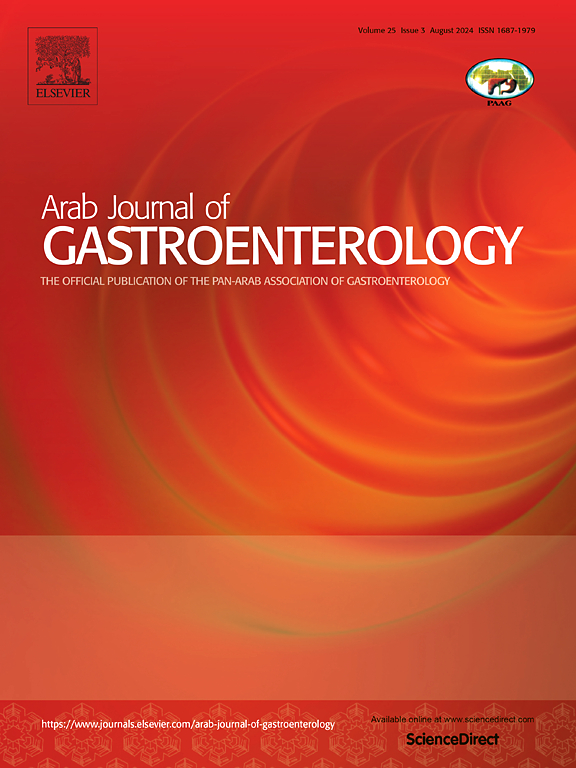明胶海绵内镜下治疗消化道出血。
IF 1.1
4区 医学
Q4 GASTROENTEROLOGY & HEPATOLOGY
引用次数: 0
摘要
背景与研究目的:固体明胶海绵广泛应用于外科手术,但不能用于内镜下。为此制备了一种液态明胶海绵(FGS)。材料与方法:通过猪实验,评价FGS对胃肠道创面出血的止血作用。一组出血溃疡随机喷洒FGS,另一组出血溃疡随机喷洒生理盐水。术后2 h、3 d、14 d分别行内镜检查,评价止血效果及溃疡愈合情况。第14天,对溃疡中央组织进行活检。此外,还进行了体外FGS动态凝血和胃液混合实验。结果:FGS组初始止血成功率高于NC组,止血时间短于NC组。NC组溃疡再出血率显著高于FGS组(75% vs. 25%)。术后14 d, FGS组溃疡愈合质量明显优于对照组。FGS组溃疡组织的炎症和纤维化程度较低,微血管密度较高。此外,FGS组溃疡组织中IL-6 mRNA水平与NC组和正常组比较差异无统计学意义(P < 0.05)。结论:内镜下采用自制FGS对肠出血创面止血效果好,可抑制再出血,促进创面愈合。本文章由计算机程序翻译,如有差异,请以英文原文为准。
Endoscopic treatment of gastrointestinal bleeding with gelatin sponge
Background and study aims
Solid gelatin sponge is widely used in surgery but cannot be used endoscopically. A fluid gelatin sponge (FGS) was prepared for this research.
Material and methods
The hemostatic effect of the FGS on gastrointestinal wound bleeding was evaluated through pig experiments. One bleeding ulcer was randomly sprayed with FGS, and the other bleeding ulcer was sprayed with normal saline. Endoscopy was performed after 2 h, 3 days, and 14 days for the evaluation of the hemostatic effect and the quality of ulcer healing. At 14 days, the central tissue of the ulcer was biopsied. In addition, FGS dynamic coagulation and gastric juice mixing experiments were performed in vitro.
Result
The FGS group had a higher initial hemostasis success rate and shorter hemostasis time than the NC group. The rebleeding rate of ulcer was significantly higher in the NC group than that in the FGS group (75 % vs. 25 %). Fourteen days after the operation, the ulcer healing quality in the FGS group was significantly better than that in the control group. The degree of inflammation and fibrosis of ulcer tissues in the FGS group was lower, whereas microvessel density was higher. In addition, IL-6 mRNA levels in ulcerated tissues of the FGS group were not significantly different from those in the NC group and normal group (P>0.05).
Conclusion
The adoption of self-made FGS under endoscopy achieved a good hemostatic effect on intestinal bleeding wounds, inhibiting rebleeding and accelerating wound healing.
求助全文
通过发布文献求助,成功后即可免费获取论文全文。
去求助
来源期刊

Arab Journal of Gastroenterology
Medicine-Gastroenterology
CiteScore
2.70
自引率
0.00%
发文量
52
期刊介绍:
Arab Journal of Gastroenterology (AJG) publishes different studies related to the digestive system. It aims to be the foremost scientific peer reviewed journal encompassing diverse studies related to the digestive system and its disorders, and serving the Pan-Arab and wider community working on gastrointestinal disorders.
 求助内容:
求助内容: 应助结果提醒方式:
应助结果提醒方式:


